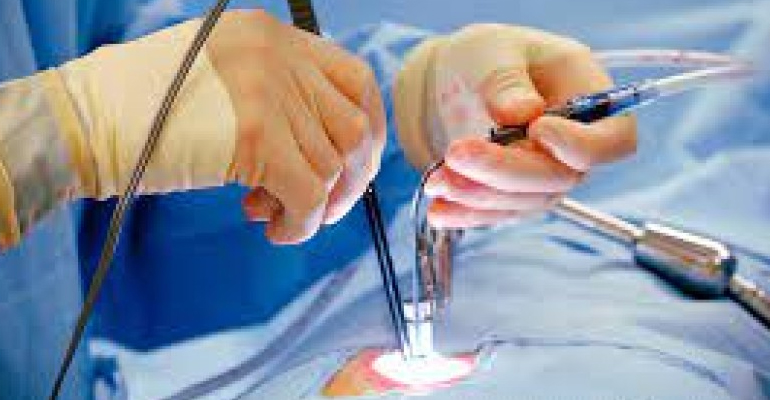For Appointment
- +91-9870019481 / +91-9769019481
- Mon - Sat: 04.00PM to 06.00PM

Minimal Access Surgery
Minimal Access Surgery (MAS), also known as minimally invasive surgery (MIS), is a surgical technique that allows surgeons to perform operations with the smallest possible incisions, leading to less trauma to the body compared to traditional open surgery. The goal of MAS is to reduce pain, scarring, and recovery time while minimizing the risk of complications.
Key Features of Minimal Access Surgery:
-
Small Incisions:
- Unlike open surgery, which may require large incisions to access the surgical site, MAS uses small incisions, typically less than 1 cm. These small incisions are used to insert surgical instruments and a camera (laparoscope) to visualize the internal organs.
-
Laparoscopy and Endoscopy:
- Laparoscopy: The most common form of MAS, where a laparoscope (a thin, flexible tube with a camera and light) is inserted through a small incision to provide a view of the abdominal or pelvic cavity. This allows surgeons to operate without making large incisions.
- Endoscopy: A similar technique where an endoscope is inserted through natural body openings (such as the mouth or rectum) or small incisions to diagnose or treat conditions in areas such as the gastrointestinal tract or respiratory system.
-
Advanced Surgical Instruments:
- Specialized instruments are designed to be inserted through the small incisions, allowing surgeons to perform precise operations. These instruments can cut, coagulate, and manipulate tissues with high accuracy.
-
Robotic-Assisted Surgery:
- In some cases, MAS is performed using robotic systems, where the surgeon controls robotic arms equipped with surgical instruments. This offers even greater precision, flexibility, and control in complex procedures.
Common Procedures Performed with Minimal Access Surgery:
-
Gallbladder Removal (Laparoscopic Cholecystectomy):
- Removal of the gallbladder through small incisions in the abdomen, typically used to treat gallstones or gallbladder inflammation.
-
Appendix Removal (Laparoscopic Appendectomy):
- Surgical removal of the appendix, often performed as an emergency procedure for appendicitis.
-
Hernia Repair:
- Repair of abdominal or groin hernias using small incisions to insert a mesh that reinforces the weakened area.
-
Bariatric Surgery:
- Weight-loss surgeries, such as gastric bypass or sleeve gastrectomy, are often performed laparoscopically to reduce obesity-related health issues.
-
Colorectal Surgery:
- Removal of parts of the colon or rectum for conditions such as cancer, diverticulitis, or inflammatory bowel disease, performed using laparoscopic techniques.
-
Gynecological Procedures:
- Surgeries such as hysterectomy (removal of the uterus), oophorectomy (removal of the ovaries), and tubal ligation (sterilization) can be performed using MAS.
-
Thoracic Surgery:
- Minimally invasive techniques can be used for lung resections, treatment of esophageal conditions, and other chest surgeries.
-
Joint Surgery (Arthroscopy):
- A minimally invasive procedure used to diagnose and treat joint problems, particularly in the knee, shoulder, and hip.
Benefits of Minimal Access Surgery:
- Reduced Pain: Smaller incisions lead to less tissue damage and pain post-surgery.
- Faster Recovery: Patients typically experience shorter hospital stays and quicker return to normal activities.
- Lower Risk of Infection: The smaller incisions reduce the likelihood of infection and other complications.
- Minimal Scarring: Smaller incisions result in less visible scarring, offering cosmetic benefits.
- Shorter Hospital Stay: Many MAS procedures are performed on an outpatient basis or require only a short hospital stay.
Risks and Considerations:
- Skill and Experience: MAS requires specialized training and experience for surgeons. Inadequate expertise can lead to complications or incomplete procedures.
- Limited Visibility: Although advanced cameras provide excellent visualization, the limited field of view can make certain procedures more challenging.
- Potential for Conversion to Open Surgery: In some cases, if complications arise or the procedure is too complex, the surgeon may need to convert to an open surgery approach.
- Cost: The technology and equipment required for MAS can make it more expensive than traditional surgery in some cases.
Minimal Access Surgery represents a significant advancement in surgical care, offering patients the benefits of less pain, quicker recovery, and better overall outcomes. As technology continues to evolve, MAS is becoming increasingly available for a wide range of surgical procedures, improving the quality of care for patients worldwide.

